WITHINGS BPM Core User Manual
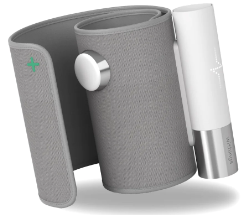
Overview
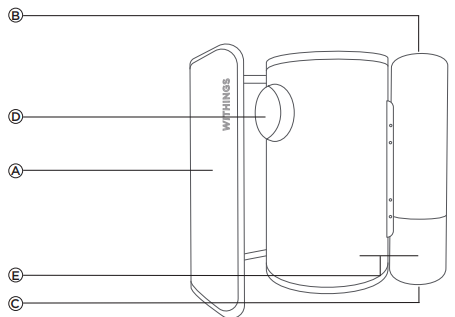
- Cuff
- Button
- USB plug
- Digital stethoscope
- Electrodes
Before the measurement
- Use the product on the left upper arm.
- Rest for 5 minutes before the measurement.
- Sit down in a comfortable position, legs uncrossed. feet flat on the floor, arm and back supported.
- Wear only one layer of clothing, which should not cover your left arm. The electrodes should be in contact with the skin.
- Take the measurement in a calm and quiet area.
For both measurements
Tighten the cuff around your arm. The stethoscope should be facing the rib cage, with the metal tube facing down about one inch above the elbow. For blood pressure measurement Place your left arm on a table with the cuff level with your heart and your palm facing up. Make sure the cuff is not touching the left side of your chest. Your arm should be resting comfortably on the table without making any effort. Do not speak or move during the measurement.
Standard mode
The first one is a blood pressure measurement, which you should take in the position described on p.17 The second is a combined measurement of an ECG and heart sounds check via the stethoscope. When the screen displays the illustrated pictogram, it means that the blood pressure measurement is finished and that you will now proceed to the ECG and stethoscope signal recording. Adjust your arm position to place the stethoscope against your chest, and place your hand on the metal tube to ensure an accurate measurement.
Other measurement modes
When you push the button to start BPM Core, you can also select “Start x3” or “ECG” by swiping the light trail on the screen. “Start x3” launches three blood pressure measurements in a row followed by an ECG and stethoscope measurement. “ECG” will only record the ECG and stethoscope signals. Make sure to use the correct arm position for each measurement type.
LED color signification
The LED of the button of BPM Core can be:
Blue: if BPM Core has not been paired with a mobile device yet.
Green: for optimal and normal blood pressure measurements.
Orange: for high normal blood pressure measurements.
Red: if hypertension (grade 1, 2, 3) or isolated systolic hypertension are detected.
Pink: if you press and hold the monitor’s button for 6 seconds until the Settings menu opens and “Training” is displayed on the screen.
Note: The LED color displayed on the device may vary depending on the classification guidelines of your country. Please go to support.withings.com for
more information on blood pressure measurement classification.
ERROR message
If an ERROR message appears on the screen, please refer to the explanation displayed in the app and the troubleshooting procedures described beginning on p. 34.
Box contents
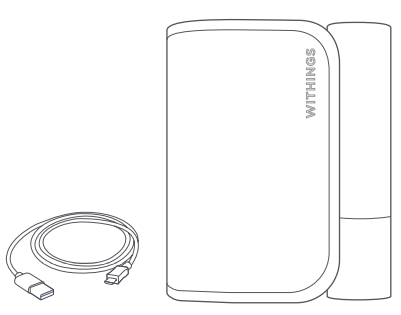
- Blood pressure monitor
- Charging cable
- Instruction manual
Important information
Requirements
In order to use your BPM Core, you need an iOS (10.0 or higher) or Android (6.0 and higher) device to install it.
Important safety information
Intended use
BPM Core is a digital monitor intended for use in measuring blood pressure and heart rate, to record a one-lead ECG to detect atrial fibrillation, and uncovering valvular heart diseases (aortic stenosis, aortic regurgitation, mitral regurgitation). with an arm circumference of 9 inches to 17 inches (22 cm to 42 cm). BPM Core is a medical device.
General safety and precautions
- Do not forcibly bend the arm cuff.
- Do not apply strong shocks and vibrations to the blood pressure monitor or drop it.
- Do not take measurements after bathing, drinking alcohol, smoking, exercising, or eating.
- Do not immerse the arm cuff in water.
- Do not use a pacemaker, a defibrillator, or another electric implant.
- Use on adults only.
- Do not use it on children or pets.
After use
Cleaning
- Do not use an alcohol-based or solvent agent to clean the device.
- Clean the device with a soft and dry cloth.
Storage
- Store the device and the components in a clean and safe location.
- If storage conditions are different from the usage conditions indicated in this document, please wait 30 minutes before taking a measurement.
Left arm position depends on the type of measurement being performed
For ECG and stethoscope signal recording: The excess cuff should not overlap the stethoscope. For this measurement, you should place the stethoscope in contact with your chest, and the two electrodes inside the cuff should be in contact with your skin. Make sure that the stethoscope is in contact with your chest during the measurement. You should not move or talk during the measurement. Breathe normally. You do not need to put your left hand on a table.
General usage
Always consult your doctor. Self-diagnosis of measurement results and self-treatment are dangerous. People with severe blood flow problems or blood disorders should consult a doctor before using the blood pressure monitor. Cuff inflation can cause internal bleeding. Operational factors such as common arrhythmias, ventricular premature beats, arterial sclerosis, poor perfusion, diabetes, age, pregnancy, pre-eclampsia, or renal disease can affect the performance of the automated sphygmomanometer and/or its blood pressure reading.
This is a precision measuring device that may be understood by lay users, but should still be handled with care. Exposing the device to prolonged lint, dust or sunlight might reduce its life or damage it. A damaged cuff or sensor may lead to incorrect measurements. The USB port should only be used for charging the device. The user is an intended operator. Parts in contact with the skin: cuff and electrodes. Measurements can be affected by extreme temperatures, humidity & altitude.
Maintenance
If you cannot fix the problem using the troubleshooting instructions, request service from your dealer. The manufacturer will make available on request circuit diagrams, component part lists, descriptions, calibration instructions, or other information that will assist the manufacturer’s staff or authorized representative with the repair.
Troubleshooting
- Problem… Troubleshooting
- No results for the ECG measurement… Ensure that the three electrodes are in direct contact with the skin. If yes, clean them with a tissue.
- Check the position of the stethoscope.
- Check the cuff position, fasten the cuff correctly and remeasure blood pressure again.
- The low battery icon is displayed on the device. Charge the device with the cable provided
- The blood pressure cannot be taken and the application shows an error message… Re-fasten the cuff
FCC Statement
This device complies with Part 15 of the FCC Rules.
- this device may not cause harmful interference and
- this device must accept any interference received, including interference that may cause undesired operation of the device.
FCC RF Radiation Exposure Statement:
This equipment complies with FCC radiation exposure limits set forth for an uncontrolled environment. End users must follow the specific operating instructions for satisfying RF exposure compliance.
BPM Core outputs

REFERENCE
https://www.withings.com/it/en/bpm-core


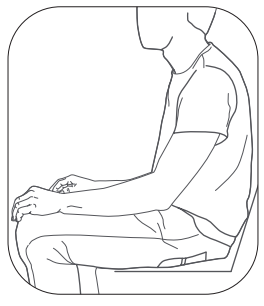
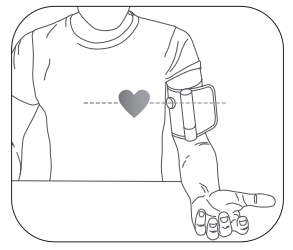
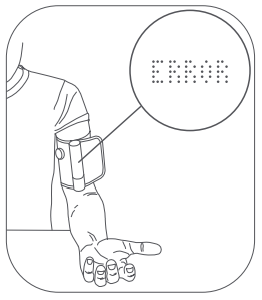

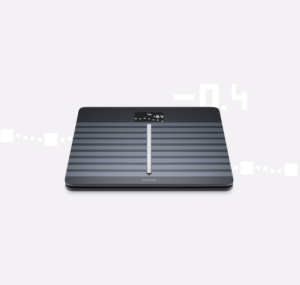

 Afrikaans
Afrikaans Albanian
Albanian Amharic
Amharic Arabic
Arabic Armenian
Armenian Azerbaijani
Azerbaijani Basque
Basque Belarusian
Belarusian Bengali
Bengali Bosnian
Bosnian Bulgarian
Bulgarian Catalan
Catalan Cebuano
Cebuano Chichewa
Chichewa Chinese (Simplified)
Chinese (Simplified) Chinese (Traditional)
Chinese (Traditional) Corsican
Corsican Croatian
Croatian Czech
Czech Danish
Danish Dutch
Dutch English
English Esperanto
Esperanto Estonian
Estonian Filipino
Filipino Finnish
Finnish French
French Frisian
Frisian Galician
Galician Georgian
Georgian German
German Greek
Greek Gujarati
Gujarati Haitian Creole
Haitian Creole Hausa
Hausa Hawaiian
Hawaiian Hebrew
Hebrew Hindi
Hindi Hmong
Hmong Hungarian
Hungarian Icelandic
Icelandic Igbo
Igbo Indonesian
Indonesian Irish
Irish Italian
Italian Japanese
Japanese Javanese
Javanese Kannada
Kannada Kazakh
Kazakh Khmer
Khmer Korean
Korean Kurdish (Kurmanji)
Kurdish (Kurmanji) Kyrgyz
Kyrgyz Lao
Lao Latin
Latin Latvian
Latvian Lithuanian
Lithuanian Luxembourgish
Luxembourgish Macedonian
Macedonian Malagasy
Malagasy Malay
Malay Malayalam
Malayalam Maltese
Maltese Maori
Maori Marathi
Marathi Mongolian
Mongolian Myanmar (Burmese)
Myanmar (Burmese) Nepali
Nepali Norwegian
Norwegian Pashto
Pashto Persian
Persian Polish
Polish Portuguese
Portuguese Punjabi
Punjabi Romanian
Romanian Russian
Russian Samoan
Samoan Scottish Gaelic
Scottish Gaelic Serbian
Serbian Sesotho
Sesotho Shona
Shona Sindhi
Sindhi Sinhala
Sinhala Slovak
Slovak Slovenian
Slovenian Somali
Somali Spanish
Spanish Sundanese
Sundanese Swahili
Swahili Swedish
Swedish Tajik
Tajik Tamil
Tamil Telugu
Telugu Thai
Thai Turkish
Turkish Ukrainian
Ukrainian Urdu
Urdu Uzbek
Uzbek Vietnamese
Vietnamese Welsh
Welsh Xhosa
Xhosa Yiddish
Yiddish Yoruba
Yoruba Zulu
Zulu